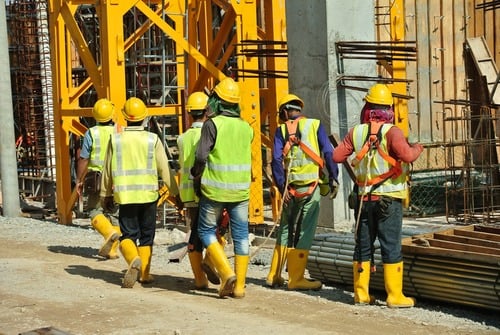
Failure to Provide Adequate Fall Protection
In 2015, fall protection was one of the top violations for OSHA with an outstanding 6,721 citations for the year. These can be some of the most serious injuries and deaths in all of the construction industry. In fact, according to the Bureau Labor of Statistics, fatalities from falls increased by 10% in 2014 from what the statistic was in 2013! Fall protection must be provided, because of these statistics, at elevations of four feet in general industry workplaces, five feet in shipyards, and six feet in the construction industry.
Beneficial OSHA Guidelines
OSHA has developed some steps to keep workers safe based off of three aspects known as Plan, Provide, and Train.
- Plan: Ladders, scaffolds, and roof work may be necessary for a project in construction. Because of this, workers and employers must consider this so that they can prepare for the job. This will make them able to find the appropriate fall arrest systems.
- Provide: If you are a worker who is at six feet off the ground, then you may be aware that you are at an increased risk of injury. A personal fall arrest system may be necessary in this situation.
- Train: If you are working high above the ground, then you should receive proper training for the job. For this, OSHA has the necessary resources.
OSHA is a very vital source of information on what you can do if an employer is not taking special precautions on the job. If your employer fails to take safety into account, you may have to file a complaint to get them to adhere to safety standards.
The Seriousness of Accidents
OSHA is supposed to always investigate incidents if they are serious enough, as well as issue penalties in some cases when negligence is identified. In one incident taking place in 2015, a construction worker was part of a construction team and fell through a concrete roof in a terrible accident. He sustained serious, traumatic injuries. OSHA indicated that the accident was preventable and the company had to pay nearly $45,000 toward the incident. Because of this, people have learned that the importance of fall protection is so important and should never be missed!
However, one should note that these accidents do not only cause serious injuries and even fatalities. The rising numbers of accidents stemming from falls cost about $70 billion annually in the U.S. to take care of workers’ compensation and other medical costs. So, while many businesses are protecting workers for the sake of preventing terrible accidents that could cause long-lasting effects, they must also think of the compensation costs and what this means for them.
Here are some things that both employers and employees can keep in mind:
- If workers are working in areas that could contain holes in the floor, use a toe-board. Railing and industrial safety gates are equally as important.
- Guardrails should also be used to prevent workers from falling into or onto dangerous machines or equipment, regardless of the height.
- Fall protection systems like lines, safety nets, stair railings, and handrails may be important as well.
All workers should be trained to help prevent these injuries and take extra precautions. Because of this, when an injury occurs, liability could fall on the employer for not keeping them safe. Call us today for more information on what to do if you sustained a serious personal injury!
















